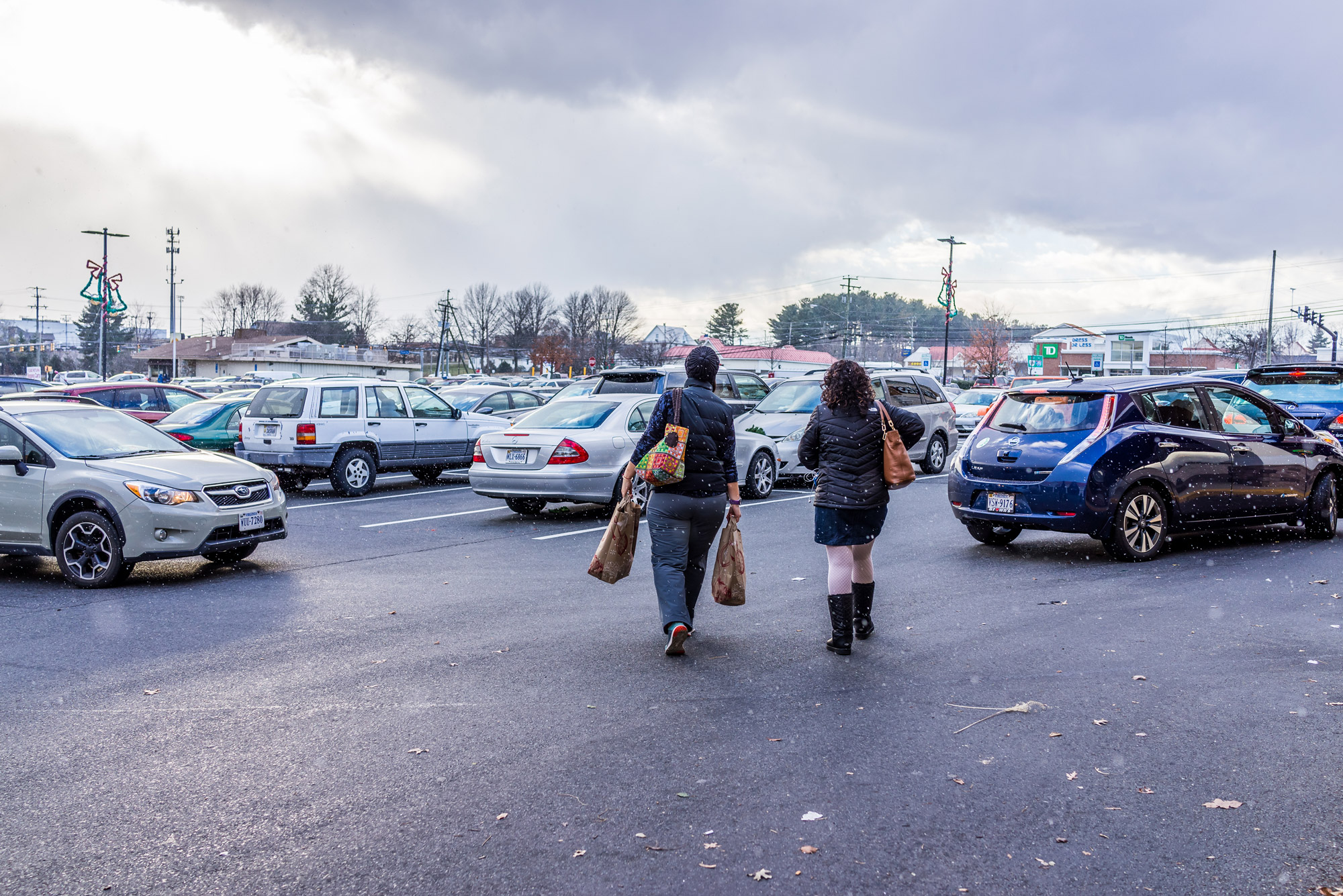We’ve Got the Secret to Easy Parking during Your Holiday Shopping

Neither grabbing the first parking spot in a mall lot nor trying to park near your store is the most time-saving strategy, research coauthored by BU physicist Paul Krapivsky says. Photo by istock contributer krblokhin
We’ve Got the Secret to Easy Parking during Your Holiday Shopping
BU statistical physicist Paul Krapivsky on what you need to know
Chestnuts roasting on an open fire, Jack Frost nipping at your nose—and swearing at the guy who just grabbed that last parking space: welcome to the holidays. The shopping crush at malls and box stores is one yuletide tradition that could make a Scrooge out of anyone. This year, however, math may make the holiday ordeal less unpleasant.
Using computer modeling, coauthors Paul Krapivsky, a College of Arts & Sciences research associate professor of physics, and Sidney Redner of the Santa Fe Institute calculate in a recent paper that if the goal is to spend the least time possible finding a space, your best bet is to skip the first spot you encounter far from the store door, and pick the next one you come across.
Such a “prudent” driver, the paper says, saves more time than the other two types modeled. “Meek” drivers seize the first available spot, but face a time-consuming hoof across the parking lot to the store entrance, a “ridiculously inefficient” strategy, Krapivsky and Redner write. “Optimistic” drivers make a beeline for the entrance to take the nearest available space, but since those are often filled, the optimists must backtrack to find what’s left.
“Even though the prudent strategy does not allow the driver to take advantage of the presence of many prime parking spots close to the target,” the paper says, “the backtracking that must always occur in the optimistic strategy outweighs the benefit…”
The researchers, whose paper was published by the Journal of Statistical Mechanics, make certain assumptions about their “idealized one-dimensional parking lot,” including that “all cars are the same size and fill exactly one parking spot.” (Motorists who’ve encountered space-straddling parkers might have a bone to pick with that one.)
For those whose shopping is still underway, BU Today asked Krapivsky four questions about squeezing into those packed parking lots.
Q&A
with Paul Krapivsky
BU Today: Of all topics for a physicist to study, what made you so interested in parking?
Krapivsky: I and my coauthor are statistical physicists. This branch of physics is concerned with interacting systems consisting of a huge number of building blocks of various nature—spins, molecules, agents, cars. The interactions between these elements lead to emerging behaviors, which can often be simpler than the behavior of few-particle systems. This counterintuitive property—that the large size of a system often plays an advantageous role, leading to simple collective behaviors—is a key in successful applications of the methods of statistical physics and probability theory.
I wonder if motorists might object to certain of your modeling assumptions, like each car taking up only one space and that a driver has time to find a space before the next car enters the lot?
The model we study is indeed greatly idealized. One reason for studying such models is simple: one postulates simple rules, but then employs rigorous math rather than relying on feeble ways of arguing (intuition, ideology in models of social dynamics, etc.).
Our model effectively depends on a single parameter, which is essentially the average number of parked cars. At first sight, the meek strategy seems reasonable, but math analysis has revealed that it is spectacularly ineffective when our parameter is large. Our analysis of the meek and optimistic strategies is mostly analytical (relying on math). The prudent strategy is more challenging, and we mostly studied it via computer simulations.
Your paper notes alternative ways besides saving time to measure parking efficacy. Some suggest, for example, that walking from faraway spaces is good exercise for overweight people. How far can math take us in deciding the optimal strategy for chores like parking?
I love walking, I don’t have a car, I bike, and I use public transportation. My coauthor bikes much more than I do; he drives only when it is absolutely necessary. So thinking about parking processes was more an intellectual challenge than a practical necessity for us.
Still, even the idealized versions we have studied are intriguing and essentially unexplored. You are absolutely correct that the definition of optimal parking is far from obvious.
How much of your own shopping do you do online, and will that ultimately surpass even math as the proven way to avoid parking hassles?
I shop a bit online, and in any case, as follows from the previous answer, our theoretical work is hardly relevant to my personal shopping experience. I just walk or bike to shops.
Comments & Discussion
Boston University moderates comments to facilitate an informed, substantive, civil conversation. Abusive, profane, self-promotional, misleading, incoherent or off-topic comments will be rejected. Moderators are staffed during regular business hours (EST) and can only accept comments written in English. Statistics or facts must include a citation or a link to the citation.